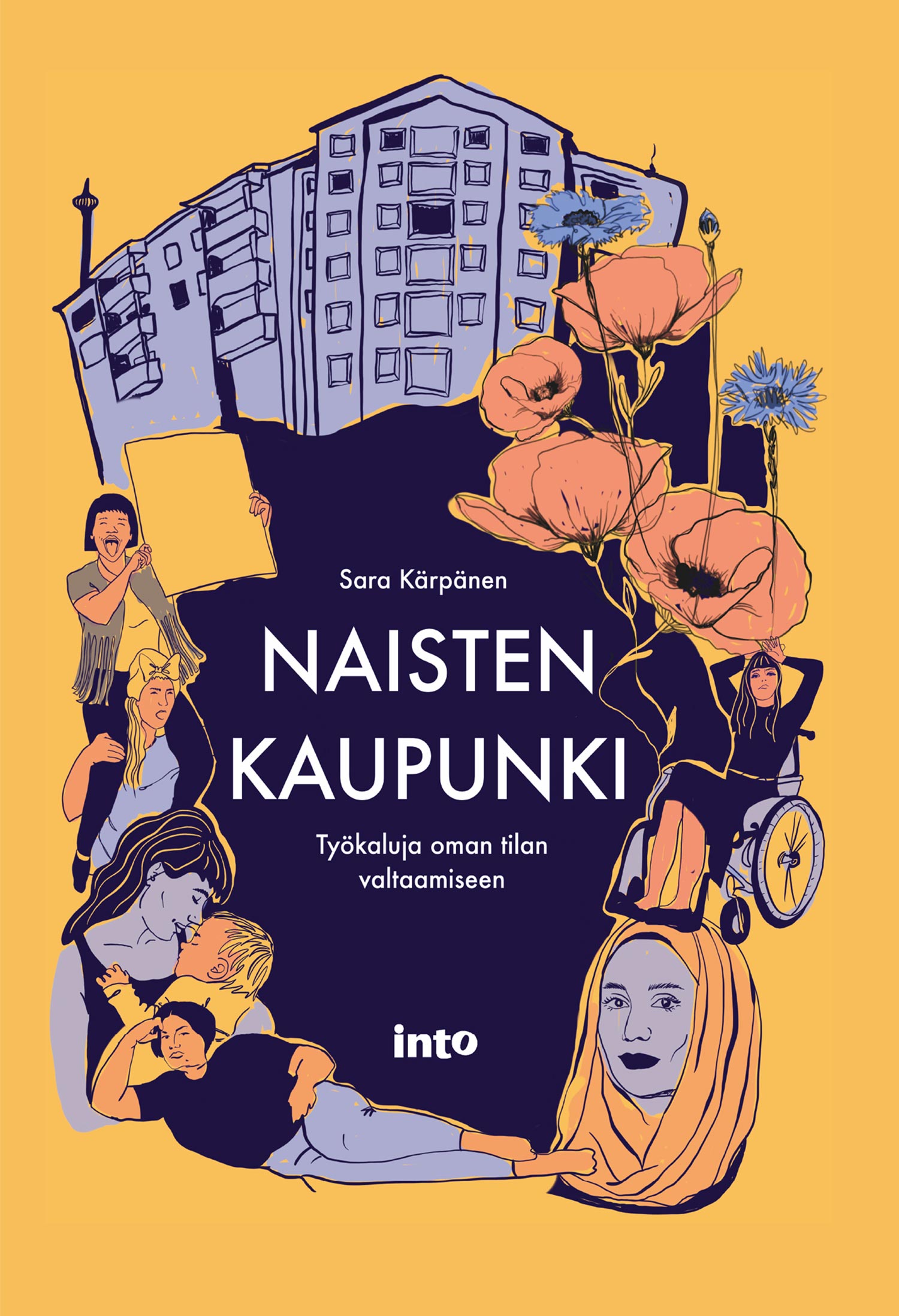- Login
Critical Spatial Practice


‘If they don’t give you a seat at the table, bring a folding chair.’ — Shirley Chisholm
‘The good citizen when he opens his door in the evening must be banker, golfer, husband, father; not a nomad wandering the desert, a mystic staring at the sky, a debauchee in the slums of San Francisco, a soldier heading a revolution, a pariah howling with skepticism and solitude.’ ― Virginia Woolf, Street Haunting (1927).
Naisten Kaupunki – Työkaluja oman tilan valtaamiseen, (City of Women — Tools for Occupying Space) (2022) written by Sara Kärpänen, dives into the history of urban spaces full of gentlemen’s clubs and illegal graffiti. Many social changes have stemmed from the occupation of the public space, be it by suffragettes on bicycles, public demonstrations in the market squares or revolutionary writings on the walls.
Through first-person stories, interviews and bottom-up initiatives, this non-fiction book envisions a new kind of present-day reality in which women and marginalized groups take over public space by sowing seed bombs in their neighbourhoods, singing anti-rape songs, and creating a more just space in both online and urban environments.
The book includes interviews with researchers, activists, and architects from Finland and around the world, following Kärpänen’s own journey from Finland to Portugal, Los Angeles, and Latin America, as well as artist communities in Los Angeles and Hackney Wick in East London. It also serves as a practical workbook that encourages the alternative construction of everyday experiences in the public space. Case studies and practice-led examples include setting up a feminist mobile library and navigating through the cityscape using situationist maps, working to build more equitable cities.
Cities are not neutral, and the use of public space is gendered, even if we do not always register these different uses. Historically, public spaces, buildings, and even algorithms, have been designed and built by and for able-bodied men. Naisten Kaupunki takes a critical approach to considering the different needs and socioeconomic experiences of women, girls, sexual and gender minorities, and people with disabilities.
As city dwellers, we rarely get to decide on the visual identity or the architectural structures of our everyday environment. The makers, activists, and artists interviewed for Naisten Kaupunki have developed new solutions, practices, and initiatives operating in the public realm. What unites all the case studies is the desire to think independently, subvert, and question existing establishments and dialogues – and occupy space.
Naisten Kaupunki was published by Into Kustannus in February 2022 and it is illustrated by artist Heta-Linnea Kovanen. The book’s English translation is forthcoming.
Sara Kärpänen is a multidisciplinary artist, writer and the founder of feminist media and social enterprise Women of the Wick (www.womenofthewick.com/) representing stories and elevating the voices of women and non-binary people in East London and beyond. Sara completed her first Master’s degree in Visual Culture at the Aalto University, School of Arts, Design and Architecture, and is a graduate of the MA Situated Practice programme at UCL. Her work is driven by the power of storytelling and using it as an interactive and intuitive tool to connect communities. Her non-fictional and creative writing is published regularly in Finnish and international publications such as the ARK – Architecture Review, Mondo, Found and Flourish, Shado Mag and Creative Land Trust, amongst others. Naisten Kaupunki is Sara’s first book and was made possible by the generous support of the Finnish Non-Fictional Writers Association, Kone Foundation and Taike – The Arts Promotion Centre Finland. Sara lives and works in London.
Sara’s layered approach to arts and writing encompasses practice-led research, urbanism, and critical feminist studies. Through her writing and work, she aims to understand and expand the notion of the role of artists in urban communities, gentrification, and regeneration processes with an emphasis on lived experiences and storytelling. In her ongoing research, Sara looks at the layers of nostalgia, solastalgia, and belonging through the third, second, and first-generation Finnish Karelian immigrants’ experiences of longing for a place that no longer exists.
Caroline Criado Perez, Invisible Women Exposing Data Bias In A World Designed For Me, (Chatto & Windus: 2019).
Jane Rendell, The Pursuit of Pleasure: Gender, Space and Architecture in Regency London, London: The Athlone Press, 2022).
Virginia Woolf, Street Haunting: A London Adventure, (1927).



































































